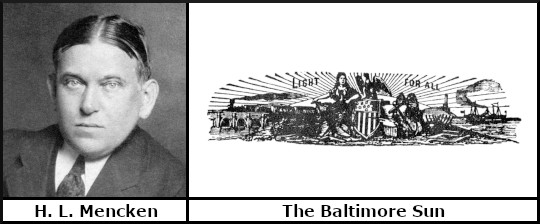H. L. Mencken? Theo Lippman Jr.? Apocryphal?

Question for Quote Investigator: Newspaperman H. L. Mencken is famous for his insightful and acerbic commentaries, but he also spent the early years of his career as a reporter, and he looked back upon that period with fondness. Apparently, he nostalgically described reporting as “the life of kings” and “fun”. Would you please help me to find a citation?
Reply from Quote Investigator: In 1946 Stanley Walker who had been a reporter and editor at the “New York Herald Tribune” for many years wrote a piece titled “What Makes a Good Reporter?” which included strong praise for Mencken. Emphasis added to excerpts by QI:1
The name H. L. Mencken to most Americans doubtless means either the scholarly “Sage of Baltimore,” or the iconoclast, or the expert on the American language. Actually, whenever he has turned his hand to it, he has produced some of our finest reporting.
Walker extolled Mencken’s reportage during the Scopes Trial in 1925, and he spoke highly of several other journalists. Yet, the article ended with melancholy words about the upcoming generation of reporters:
They do not seem to have much fun, and newspaper work for them is hardly the high adventure that we used to fancy it. But maybe they are right and maybe we were wrong.
In 1946 Mencken read the article, and he sent a letter to Walker containing recollections of happiness:2
I needn’t tell you that I was delighted by your Christian mention of me in “What Makes a Good Reporter”. As I look back over a misspent life I find myself more and more convinced that I had more fun doing news reporting than in any other enterprise. It is really the life of kings.
A tweet on August 10, 2018 from the account of “The Baltimore Sun” included an image showing the full text of the 1946 letter from Mencken to Walker.3
Below are additional selected citations in chronological order.
Continue reading “Quote Origin: I Had More Fun Doing News Reporting Than in Any Other Enterprise. It Is Really the Life of Kings”